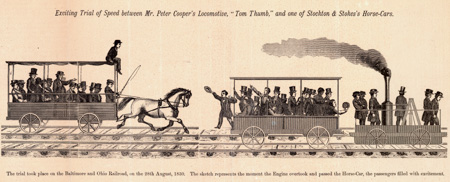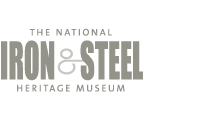Tom Thumb was the first American-built steam locomotive used on a common-carrier railroad. Designed and built by Peter Cooper in 1830, its purpose was to showcase American steam engine potential to owners of the Baltimore and Ohio Railroad (B&O).
It is especially remembered as a participant in a much-publicized race with a horse-drawn car. Testing of the Tom Thumb was performed on the company’s track between Baltimore and Ellicott Mills (now Ellicott City, Maryland). Two tracks had been constructed, and on August 28, 1830, the driver of a passing horse-drawn carriage challenged the locomotive to an impromptu race. The challenge accepted, Tom Thumb was easily able to pull away from the horse until the belt slipped off the blower pulley. Without the blower, the boiler did not draw adequately and the locomotive lost power, allowing the horse to pass and win the race.
Despite the mishap, the exercise was a success in that afterwards, the railroad committed to the use of steam locomotion, and development for a working engine soon began.



